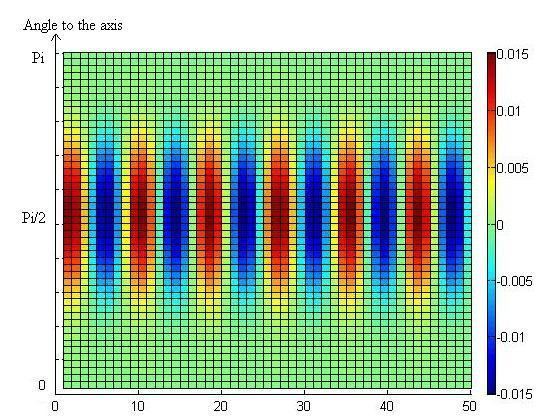 | ||
An important issue for the aeronautical industry is the reduction of aircraft noise. The rotor–stator interaction is a predominant part of the noise emission. We will present an introduction to these interaction theory, whose applications are numerous. For example, the conception of air-conditioning ventilators requires a full understanding of this interaction.
Contents
Noise emission of a rotor–stator mechanism
A rotor wake induces on the downstream stator blades a fluctuating vane loading, which is directly linked to the noise emission.
We consider a B blades rotor (at a rotation speed of
Example
For an airplane air-conditioning ventilator, reasonable data are :
The blade passing frequency is 2600 Hz, so we only have to include the first two multiples (2600 Hz and 5200 Hz), because of the human ear high-sensibility limit. We have to study the frequencies m=1 and m=2.
Optimization of the number of blades
As the source levels can't be easily modified, we have to focus on the interaction between those levels and the noise levels.
The transfer function
Where M is the Mach number and
Back to the example :
For m=1, with a Mach number M=0.3, the argument of the Bessel function is about 4. We have to avoid having mB-sV less than 4. If V=10, we have 13-1x10=3, so there will be a noisy mode. If V=19, the minimum of mB-sV is 6, and the noise emission will be limited.
Remark :
The case that is to be strictly avoided is when mB-sV can be nul, which causes the order of the Bessel function to be 0. As a consequence, we have to take care having B and V prime numbers.
Determination of source levels
The minimization of the transfer function
Directivity
All this study was made for a privileged direction : the axis of the rotor–stator. All the results are acceptable when the noise reduction is ought to be in this direction. In the case where the noise to reduce is perpendicular to the axis, the results are very different, as those figures shown :
For B=13 and V=13, which is the worst case, we see that the sound level is very high on the axis (for
For B=13 and V=19, the sound level is very low on the axis but high perpendicularly to the axis (for
